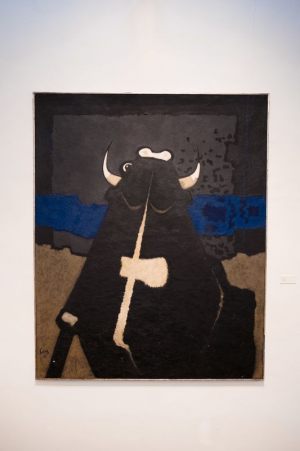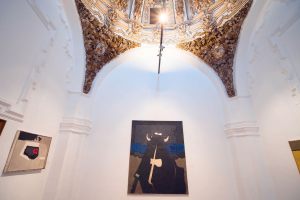Antonio Rodríguez Luna Museum is located in Plaza del Charco, one of the most central squares in Montoro, therefore you will have no problem with the location. It is the old chapel of the venerable San Jacinto which has a baroque style and it dates back to 1778.
Antonio Rodríguez Luna Museum
Who is Antonio Rodríguez Luna?
We invite you to learn some interesting facts before your visit to the museum. The painter Antonio Rodriguez Luna was born in Montoro on the 22nd July in 1910.
Having a humble origin, his artistic qualities outstood from a very young age, and the Town Hall of Montoro was one of his first sponsors, helping him financially in order to study at the School of Arts and Crafts in Seville.
What was his artistic career?
The painter spent several days in the concentration camp of ArgelesSur-Mer during the Civil War, from where he left to go to Mexico thanks to Picasso and Miró mediation.
After settling in Mexico living in exile, he enjoyed a two-year scholarship grant to perform his artistic talents at the Guggenheim Foundation in New York (USA). With his return to Mexico, he was hired as a teacher and he trained a large number of new painters.
In 1981, he donated several works to the Town Hall of Montoro in order to be exhibited in the old San Jacinto chapel.
Four years later, in 1985, he died in Montoro, his hometown, leaving a memory of his work and life that will last forever. We encourage you to get to know his work.
The works of Antonio Rodriguez Luna
In the three rooms of the monographic museum devoted to Antonio Rodriguez Luna consist of fifteen works that the painter made between 1973 and 1980. This is the last period of the artist where abstraction is the general tendency that is present in each of his canvasses.
The exhibited paintings keep a balanced composition all the time, predominating an unusual and intelligent polychromatic game, where black and duality of colours are the main representative references.
His best work: Toro furioso
The central subject of the canvas is related to a bull attack, that is full of anger and bravery, which many art researchers have perceived as the painful feeling felt by the painter due to his situation of exile to which he was subdued after the Civil War in 1936.
It is a work of great expressive power. The black, white and blue colour are prevalent both vertically and horizontally.
Virgen de la Misericordia Old Chapel Building
The building has a main door made of molinaza stone. It is a small baroque construction with a single nave, in which a dome of gallons stands out and it is decorated with polychrome plasters. Undoubtedly, it is the best example in this town of the plaster baroque of the province.
Ubicación
Plaza del Charco, 17
Horario
Sábado, domingo y festivos: 10:30 - 14:00 h
Precio
Gratuito
Nearby places
- Plaza del Charco (2 m)
- Ntra. Sra. del Carmen Parish (10 m)
- Oil Museum (350 m)
- Plaza Mayor or de España (400 m)
- Town Hall (400 m)
What other museums can you see?
- Oil Museum
- Archaeological Town Museum
- Holy Week Museum













